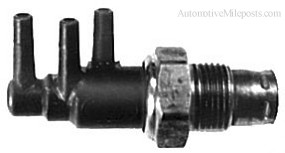Wow, the first time I understand the whole thing and how it functions!
Great - very well written, thank you, 72Hcode ::thumb::
It leaves only a few questions to me:
My 351C 4V from 1973 with a 4-speed manual was not an original A/C-car but was equipped with that EGR-system which required a two-pipe-DVCV.

Now all that EGR-system has gone long time before and I have rebuilt my engine more in direction to an 1971 351C 4V with '70 4V-heads, '70 4V-carb and a '71-style ram air system on an old school Offenhauser intake. My dizzy is an original '70 single point with 2 vacuum outlets.
Now I am on that point to decide whether I plug in a DVCV for working, a dummy-DVCV with plugged pipes or a complete dummy-plug.
Does a functional DVCV give me any advantage like described or is it neglectable?
I like the idea of a functional and original looking system but I am also aware of additional failure possibilitys I would create.
I am more into the "do-it-with-a-DVCV"-thing at the moment

If with a DVCV I would connect it like this:


I think of it as an additional System which could give me more cooling when I am in a long line of other cars in front of a mustang meeting in a hot summer for example

What do you think?
Tim












